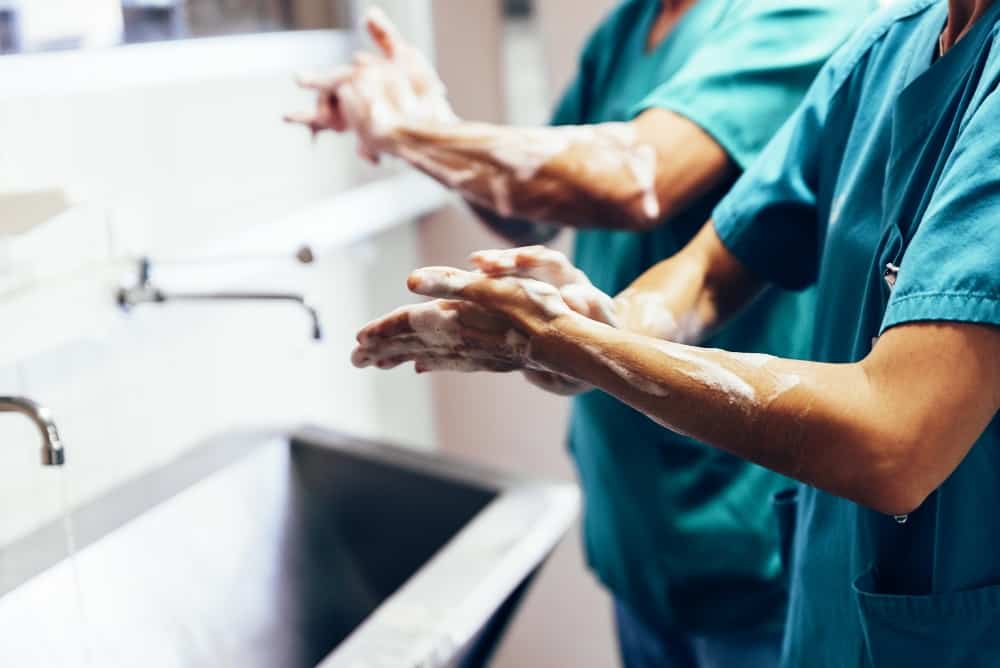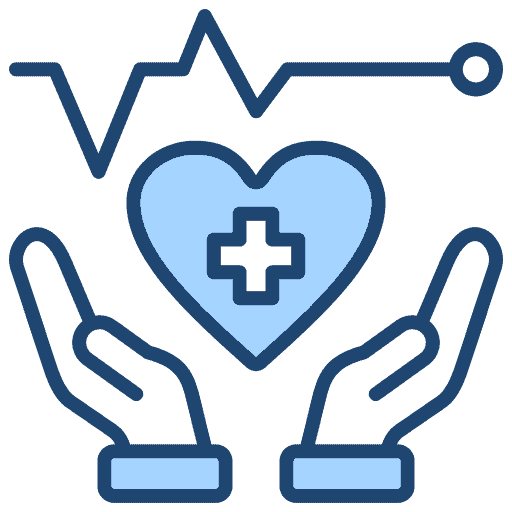
Currently, the COVID-19 pandemic is a reminder of the importance of infection control. Handwashing is the most important part of preventing the spread of infection. The CDC recommends 20 seconds of handwashing with soap and water frequently.
As an EMT, you should be washing your hands between every patient even though you are wearing gloves. This is because tiny holes can develop in gloves from wear and tear transferring patients or handling equipment.
During my surgical rotation in medical school, I learned how to wash hands. It’s not that I didn’t wash my hands before that, but I learned about a whole new level of what it means to clean your hands.
I recall we were split into small groups and instructed about the steps involved in washing hands prior to surgery. If you are going to be wearing a mask or other gear also, like cap and boot covers, you must put these on before you wash your hands.
Once you have clean hands, you must not touch anything, including your face. Also after a procedure, when taking off the mask, you must remove your gloves first, so as not to contaminate yourself.
We were each given a small sealed bag containing a scrub sponge brush and nail pick. These sponges were preconditioned with antiseptic soap. The controls for the faucet were on the floor and foot operated, so as not to contaminate hands when turning off the faucet.
Then we were shown how to lather up the soap to scrub our hands and forearms with the sponge, ensuring every surface was scrubbed vigorously. This was all done under the stern supervision of an OR nurse, who was quick to express her displeasure if you seemed to be giving less than full and complete attention to this endeavor.
After a full 5 minutes of this, including some time spent cleaning under the nails, we were to rinse our hands. We then were given a sterile towel with which to dry, ensuring not to touch our body with the towel.
Finally we filed into the operating room, using our back to open the door, with hands held high in the air in front of us. With assistance we donned our surgical gowns, then were shown how to put on our gloves in a way that avoided touching the outside surface of each glove.
Lastly, we were instructed how to remove the gown and gloves in a way that didn’t contaminate us. I was really amazed at how clean my hands felt.
Fortunately, EMTs only have to wash with soap and water for 20 seconds between patients, instead of a full five minutes. The reason surgeons scrub for five minutes is because they may be wearing the gloves for many hours during a long operation, and it is known that bacteria can multiply quickly on gloved hands unless they are all killed and the environment made inhospitable for their return. Also this level of scrubbing done as many times a day as EMTs change gloves wouldn’t be practical or healthy for the skin of your hands.
So continue doing the 20 second hand wash between patients, and remember: don’t touch your face! After you finish handling the patient, you should remove your gloves by inverting them as you roll them off, and place them in trash, not your pocket.
Ideally, change gloves before documenting or touching other uncontaminated equipment. This is not always practical in the field but do your best to keep in mind the necessity not to contaminate your rig and equipment. Disinfect equipment between calls with disinfectant wipes. You will save lives, and isn’t that what you signed up for?
As an EMT, you should be washing your hands between every patient even though you are wearing gloves. This is because tiny holes can develop in gloves from wear and tear transferring patients or handling equipment.
During my surgical rotation in medical school, I learned how to wash hands. It’s not that I didn’t wash my hands before that, but I learned about a whole new level of what it means to clean your hands.
I recall we were split into small groups and instructed about the steps involved in washing hands prior to surgery. If you are going to be wearing a mask or other gear also, like cap and boot covers, you must put these on before you wash your hands.
Once you have clean hands, you must not touch anything, including your face. Also after a procedure, when taking off the mask, you must remove your gloves first, so as not to contaminate yourself.
We were each given a small sealed bag containing a scrub sponge brush and nail pick. These sponges were preconditioned with antiseptic soap. The controls for the faucet were on the floor and foot operated, so as not to contaminate hands when turning off the faucet.
Then we were shown how to lather up the soap to scrub our hands and forearms with the sponge, ensuring every surface was scrubbed vigorously. This was all done under the stern supervision of an OR nurse, who was quick to express her displeasure if you seemed to be giving less than full and complete attention to this endeavor.
After a full 5 minutes of this, including some time spent cleaning under the nails, we were to rinse our hands. We then were given a sterile towel with which to dry, ensuring not to touch our body with the towel.
Finally we filed into the operating room, using our back to open the door, with hands held high in the air in front of us. With assistance we donned our surgical gowns, then were shown how to put on our gloves in a way that avoided touching the outside surface of each glove.
Lastly, we were instructed how to remove the gown and gloves in a way that didn’t contaminate us. I was really amazed at how clean my hands felt.
Fortunately, EMTs only have to wash with soap and water for 20 seconds between patients, instead of a full five minutes. The reason surgeons scrub for five minutes is because they may be wearing the gloves for many hours during a long operation, and it is known that bacteria can multiply quickly on gloved hands unless they are all killed and the environment made inhospitable for their return. Also this level of scrubbing done as many times a day as EMTs change gloves wouldn’t be practical or healthy for the skin of your hands.
So continue doing the 20 second hand wash between patients, and remember: don’t touch your face! After you finish handling the patient, you should remove your gloves by inverting them as you roll them off, and place them in trash, not your pocket.
Ideally, change gloves before documenting or touching other uncontaminated equipment. This is not always practical in the field but do your best to keep in mind the necessity not to contaminate your rig and equipment. Disinfect equipment between calls with disinfectant wipes. You will save lives, and isn’t that what you signed up for?


